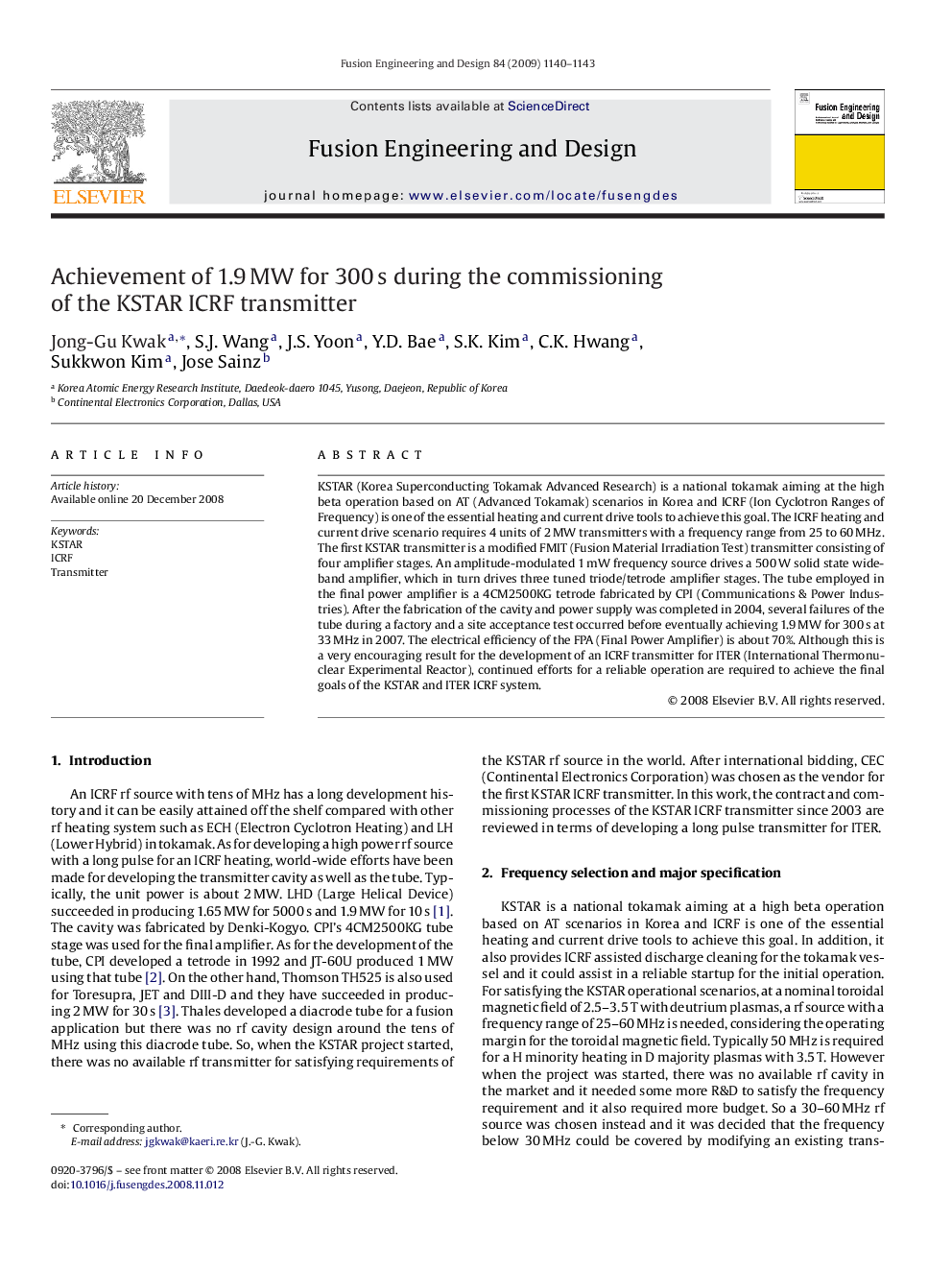| کد مقاله | کد نشریه | سال انتشار | مقاله انگلیسی | نسخه تمام متن |
|---|---|---|---|---|
| 273107 | 505039 | 2009 | 4 صفحه PDF | دانلود رایگان |

KSTAR (Korea Superconducting Tokamak Advanced Research) is a national tokamak aiming at the high beta operation based on AT (Advanced Tokamak) scenarios in Korea and ICRF (Ion Cyclotron Ranges of Frequency) is one of the essential heating and current drive tools to achieve this goal. The ICRF heating and current drive scenario requires 4 units of 2 MW transmitters with a frequency range from 25 to 60 MHz. The first KSTAR transmitter is a modified FMIT (Fusion Material Irradiation Test) transmitter consisting of four amplifier stages. An amplitude-modulated 1 mW frequency source drives a 500 W solid state wideband amplifier, which in turn drives three tuned triode/tetrode amplifier stages. The tube employed in the final power amplifier is a 4CM2500KG tetrode fabricated by CPI (Communications & Power Industries). After the fabrication of the cavity and power supply was completed in 2004, several failures of the tube during a factory and a site acceptance test occurred before eventually achieving 1.9 MW for 300 s at 33 MHz in 2007. The electrical efficiency of the FPA (Final Power Amplifier) is about 70%. Although this is a very encouraging result for the development of an ICRF transmitter for ITER (International Thermonuclear Experimental Reactor), continued efforts for a reliable operation are required to achieve the final goals of the KSTAR and ITER ICRF system.
Journal: Fusion Engineering and Design - Volume 84, Issues 7–11, June 2009, Pages 1140–1143